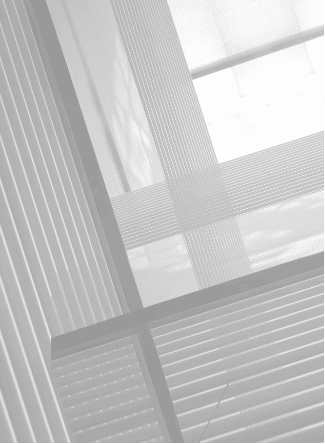If Your Plastic Surgery has “Gone Wrong” There are Several Options Available to You
It might seem like an uncomfortable thing to talk about, but sometimes a plastic surgery procedure may not turn out as you expected causing great stress and a lack of confidence. Either your surgeon was not as skilled or qualified as you were led to believe, and/or, as the weeks and months wore on after surgery, the outcome was not as satisfactory as you’d hoped.
The good news is that most – if not all – botched plastic surgery procedures can be remedied by a skilled and US board certified plastic surgeon.
What are your options if you have a botched plastic surgery procedure?
If your previous plastic surgery procedure has gone wrong, there are several things you can do. And indeed, taking immediate action will help you feel better about your situation right away, even if you might need to wait for a few weeks or months for your revision surgery.
First, don’t panic. No matter what your situation, there is a good chance that it can be remedied.
Second, it’s good to know that almost 15% of our patients come to us for revision plastic surgery, with the most commonly requested “do over” procedure being rhinoplasty or “nose job” revision surgery.
Revision Plastic Surgeries
A “revision” or “do over” plastic surgery is its own art and science. Typically, there are several plastic surgery procedures that can be revised with great success. Following are some of our most common. (Note: if you don’t see a particular procedure here please call our office.)
Facelift Revision Surgery
One of the more frequent requests at our office is for a revision, or “corrective” facelift. There are many reasons why you may feel dissatisfied with a previous face and/or neck lift:
- Lack of longevity, early loss of results, or natural ageing: most facelifts have a natural shelf-life of approximately 5-10 years
- Lack of impact: your facelift didn’t effectively “lift” or rejuvenate
- Previous surgeon lacked an “artistic eye” causing lack of aesthetic harmony
- Looking like someone else syndrome: not looking like “you”
- You’re simply unhappy, or unsatisfied with the previous surgeon’s work
The good news however, is that many facelifts that fell short of their original goals can be improved upon via revision or corrective facelift surgery.
Read more about faceflift revision surgery here.
Rhinoplasty “Nose Job” Revision
Revision rhinoplasty is one of the most common of all “revision” plastic surgeries mainly because it is one of the most difficult of all plastic surgery procedures to begin with, so there is a large demand for corrective, or secondary surgeries.
Reasons for revising a previous “nose job” range from a thoroughly “botched” procedure performed by an unqualified or unskilled surgeon, to unexpected healing issues such as difficulty breathing. But most commonly, our rhinoplasty revision patients are simply unhappy with the appearance of their “new” nose; it doesn’t aesthetically “work” in balance with their other features.
Revision rhinoplasty is actually a very common procedure, and the benefits to your sense of self-image and level of confidence are significant enough to make it worthwhile.
Read more about revision rhinoplasty surgery here.
Eyelid Revision Surgery (Blephorasty Correction)
Blepharoplasty correction or eyelid revision surgery is a surgical procedure intended to correct the results of previously performed eyelid surgery or blepharoplasty with unsatisfactory or unwanted results. However, eyelid revision surgery can often be more challenging than the initial procedure.
There are primarily two types of blepharoplasty correction:
- Revision of “under corrected” eyelid surgery where too much extra skin or fat was left behind and you are unsatisfied with the results. Eyelid revision surgery can also correct ptosis or “drooping” eyelids.
- Correction of “overdone” eyelid surgery where too much skin and/or fat was removed giving the eyes a misshapen or unnatural appearance, known as ectropion.
Read more about Blepharoplasty correction or eyelid revision surgery here.
Revision Ear Surgery (Otoplasty Correction)
Otoplasty (ear pinning) is commonly performed on children at a young age to correct prominent or “sticking out” ears, and as they grow into teenagers and young adults, it may be necessary to revise the original surgery.
Also, depending on the skill level of the surgeon who performed the original surgery, patients may find that the ears were “over corrected” giving them an unnatural or “pulled back” look. Other common complaints include unnatural-looking creases where the ear meets the skull. Revision ear surgery can correct these issues.
Read more about Revision Ear Surgery (Otoplasty Correction) here.
Fat Transfer Revision
Fat transfer revision surgery can help address issues that appear after a single fat transfer procedure or a series, such as uneven or unnatural appearance, lumps and bumps, dissolution of implants, and facial asymmetry. Unskilled application of fat transfer may also result in the face appearing too puffy, swollen, or symmetrically uneven and lopsided.
Read more about fat transfer revision surgery here.
Asian “V-Line” Revision Jaw Surgery
Asian V-line revision surgery is most often requested by patients who do not feel that the original procedure addressed all their concerns, leaving them unsatisfied with the results. For example, a square jaw or protruding may not be “softened” or V-shaped enough, or an unwanted “double chin” may still be apparent reducing the contouring effect of the V-line procedure.
Read more about Asian V-line revision surgery here.
Revision Chin Surgery
Chin revision surgery may be necessary if you are unhappy with the results of your initial procedure. In fact, chin revision surgery is one of the most common procedures we perform, often because the previous surgeon has inserted a chin implant, and this approach has not been successful and the chin needs correcting.
Read more about revision chin surgery here.
Corrective Jaw Surgery
The term “jaw surgery” refers to the most common jaw surgeries: lower jaw surgery, double jaw surgery, and bite correction. Revision corrective jaw surgery is any type of orthognathic surgery that is used to correct a previous surgical procedure.
Most typically, patients are unsatisfied because they do not like the look of their “new” jaw. It may be too masculine, or too feminine, or aesthetically not complementing the rest of their facial features. The most common reason for a poor aesthetic or cosmetic outcome is that while the previous surgeon may have had the technical skills to perform the jaw surgery, he may have been lacking the aesthetic appreciation for how the altered jaw would appear with the patient’s other facial features.
Read more about corrective jaw surgery here.
Skull Reshaping Revision
If skull reshaping and augmentation is performed by an inexperienced or unqualified surgeon you may experience an unsatisfactory result. Negative results may also occur due to infection or if the body rejects a skull reshaping implant. In fact, revision or correction of skull reshaping surgery is actually quite common — about 15% of all or our skull reshaping procedures are revision surgeries wherein we are asked to correct a previous surgeon’s work.
Read more about skull reshaping revision surgery here.
Facial Feminization Revision Surgery (FFS)
To capture authentic gender expression, your surgeon needs to be able to surgically integrate the subtle science and intrinsic differences between the male vs. female craniofacial skeleton. One of the most common types of facial feminization procedures we perform is to correct another surgeon’s work. The main reason for this is that while a surgeon may know technically what is required for feminization, they may not have a comprehensive understanding of the subtle aesthetic qualities of what makes a face “feminine” versus what makes a face simply “beautiful”.
Read more about facial feminization revision surgery here.
Dr. Deschamps-Braly is a board-certified plastic and craniofacial surgeon specializing in facial plastic surgery, orthognathic (jaw) surgery, and craniofacial surgery for adults and children. He is also one of the world’s foremost leaders and innovators in facial gender confirmation surgery.




